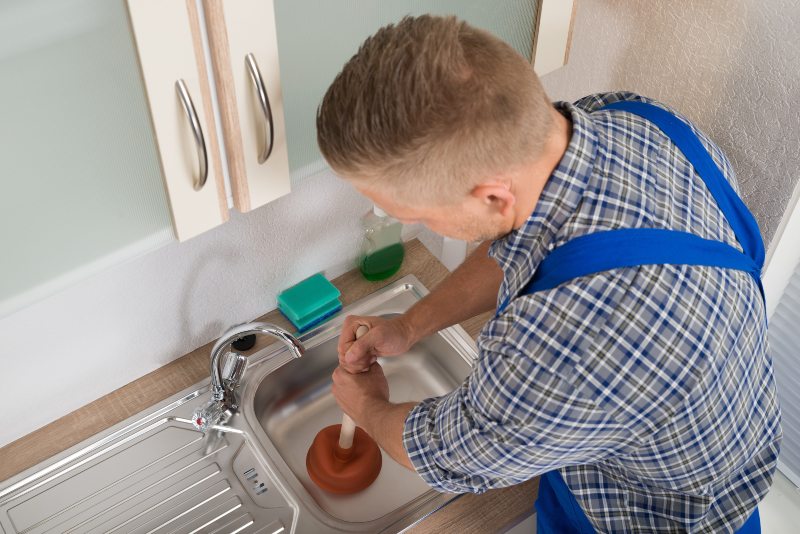
Slow drain? A plunger is the best tool to grab. But did you know that different plungers are made for specific purposes? The type meant to unclog the toilet won’t work so well on your kitchen sink and vice versa. Learn how to spot the three main types of household plungers. Then, follow the plunging basics to help you get the job done.
Types of Household Plungers
Make sure you reach for the plunger you need when the time comes by knowing the difference between each one:
- Cup plungers are used for unclogging bathroom sinks, kitchen sinks, bathtubs, and any other flat-surface drain. You can recognize it by its wide-mouthed rubber cup, which is usually red, attached to a wooden handle.
- Flange plungers are the standard tool for unclogging toilets. They feature a soft rubber flap that folds out from inside the cup to help it fit the narrow opening of a toilet bowl. Known as a flange, this flap can be tucked up inside the cup, converting it into a cup plunger if needed. However, for sanitation purposes, you should purchase separate plungers to unclog your toilets and sinks.
- Accordion plungers provide another option for unclogging toilets. They are made of molded plastic featuring flexible, accordion-style ridges. This allows more air to force itself down the pipe when you depress the plunger, helping to dislodge stubborn clogs.
How to Unclog a Drain with a Plunger
Follow these tips to plunge a clogged drain effectively:
- Use the correct plunger: The information above should help you choose the proper tool for the job.
- Submerge the plunger: For a plunger to work properly, you must partially submerge it in water. If needed, fill the sink, bathtub, or toilet with two to three inches of water so the plunger can do its job.
- Create suction: Slowly press down on the plunger to release air from the cup. By keeping the plunger in contact with the surface around the drain, you can create an airtight seal.
- Plunge straight up and down: Plunging at an angle can cause the plunger to lose suction. Position yourself directly above the plunger so you can pump it straight up and down.
- Check if the drain is clear: After pumping the plunger several times, remove it from the drain and check the water flow. If things still aren’t moving, repeat the above steps until the drain is clear.
- Plunge safely: Never use a plunger after applying drain cleaning chemicals. This could splash the chemicals around the room or onto your skin. The best option is to never use harsh, chemical-based drain openers.
If your efforts to clear a clogged drain or toilet prove unsuccessful, get in touch with Puget Sound Plumbing and Heating. We use specialized equipment and techniques to clear stubborn drains and keep your pipes flowing smoothly. Call us today at (206) 350-0079 or contact us online to schedule plumbing services in Seattle, WA.


